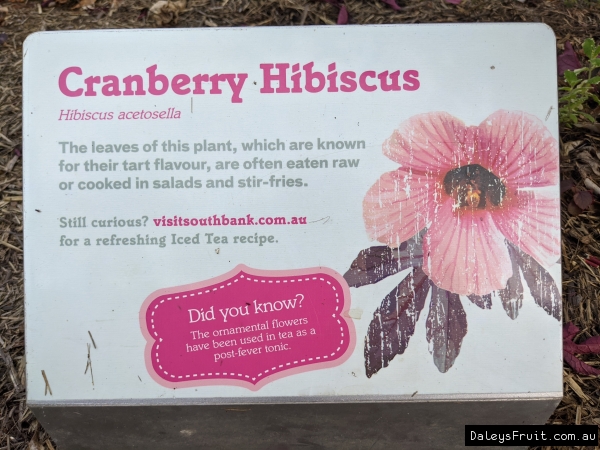Hibiscus - Cranberry
Hibiscus acetosella$17.90
When will it be in Stock?
We previously had the most to buy in Jun and Apr. With limited quantities for sale in other months. They are unlikely to be available in Mar. Remember to click above to get notified when it is available once more.
Specifications of Hibiscus - Cranberry
Preferred Climate SubtropicalLearn About Climate Zones
Grown From CuttingLearn About Propagation Methods
Max Height (when in the ground with good conditions) 1-2m
Plants required to Pollinate 1 (Self Pollinating)Learn about Pollination
Can it Handle Frosts? Sometimes
Amount of leaves in Winter? All Leaves (Evergreen)
Quarantine Restrictions to these Areas WA
Water Requirements Moderate Watering
Is it a Dwarf Fruit Tree? No (Full Size)
Time to Fruit/Flower/Harvest First Year
Sun or Shade Full (Sun:80%-100%)
Preferred Soil Type Good Drainage
Soil pH Neutral (6.6-7.3pH)
Create a Filter to find similar plants
Customers also bought
These plants are often purchased together. Also check plant information for suitability in your orchard.
Mango - Florigon
$59.00 ($59.00-$79.00 choose a size)
Dwarf Apple - Tropic Sweet
$49.00 ($49.00-$79.00 choose a size)
Blueberry - Kisses (PBR)
$29.00 ($29.00-$99.00 choose a size)
Canistel Aurea
$79.00
Curry Tree
$19.90 ($18.90-$79.00 choose a size)
Pandanus - Edible
$37.00 ($24.90-$69.00 choose a size)
Customer Tips & Reviews Hibiscus - Cranberry
Hibiscus - Cranberry
I purchased this plant as a splash of colour in my soon to be built garden.
Kekaha, HI
Cranberry Hibiscus
Prune to increase foliage. Remove lower branches to create the look of a Japanese maple tree for tropical climates.
































